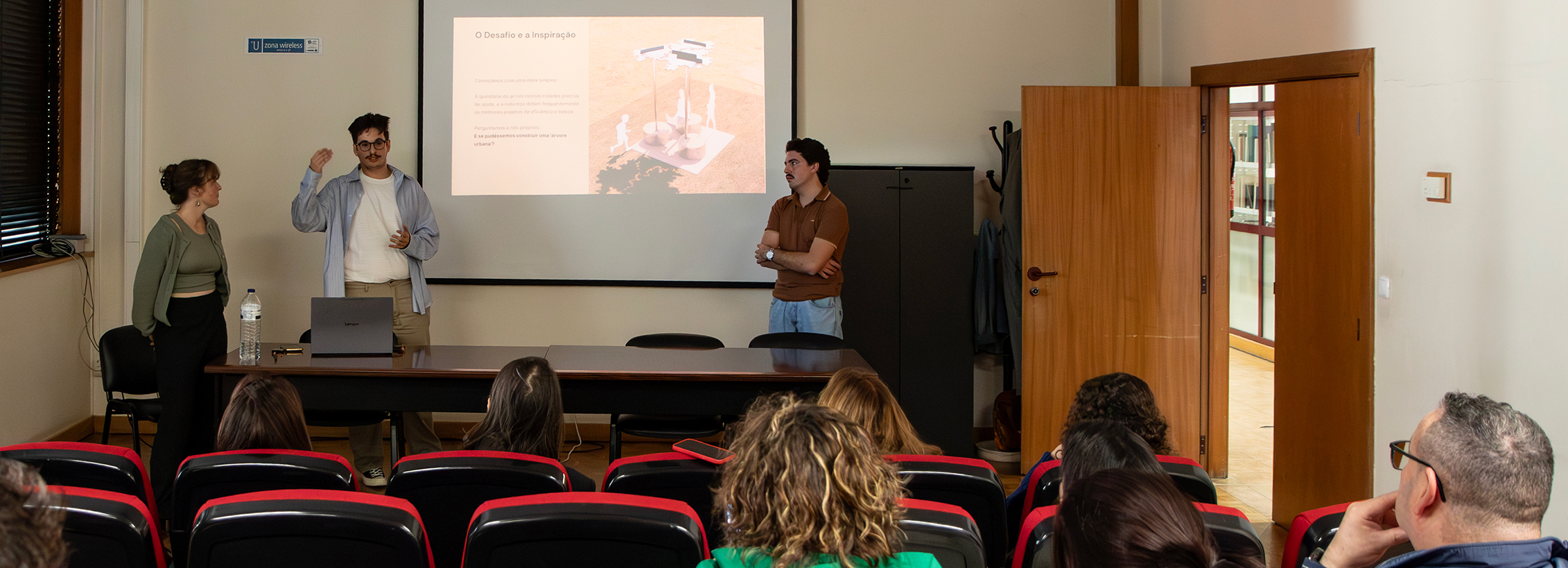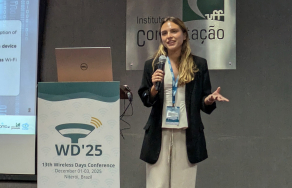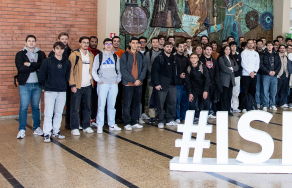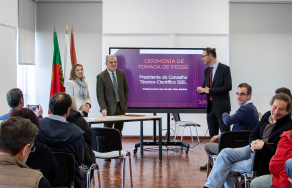On November 5, ISEL hosted the inauguration of the installation “I can’t believe it’s not a tree”, the winning project of the university competition organized by Escola da Energia and promoted by the EDP Foundation. Developed by a multidisciplinary team, mostly composed of ISEL alumni, the project combines art, engineering, and sustainability, proposing a new way of thinking about urban spaces and air quality in cities.
The presentation session was led by Nuno Cordeiro and Duarte Teixeira (graduates in Electrical Engineering and Mechanical Engineering, respectively) and Catarina Gentil (Visual Artist), who shared the journey of the project from conception to the implementation of the proof of concept installed on the ISEL campus. Other team members included Cristiano Rodrigues (Electrical Engineering), Duarte Gonçalves (Informatics and Multimedia Engineering), and Maria Carnall (Product Designer).

A tree that breathes technology
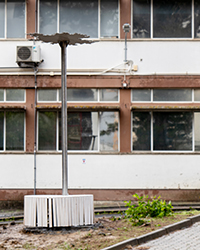 The installation “I can’t believe it’s not a tree” is an urban structure built with recycled materials, equipped with photovoltaic panels, air purifiers, and environmental sensors. This “technological tree” is capable of generating clean energy and purifying the air, continuously measuring particles (PM2.5 and PM10) and carbon dioxide. The collected data is made available in real time through an online dashboard, updated every 15 minutes, allowing for near real-time environmental monitoring.
The installation “I can’t believe it’s not a tree” is an urban structure built with recycled materials, equipped with photovoltaic panels, air purifiers, and environmental sensors. This “technological tree” is capable of generating clean energy and purifying the air, continuously measuring particles (PM2.5 and PM10) and carbon dioxide. The collected data is made available in real time through an online dashboard, updated every 15 minutes, allowing for near real-time environmental monitoring.
“Not a tree is an air purifier, a work of art, and a living laboratory. People can enjoy the space while also tracking online the energy produced and the air quality”, explained Nuno Cordeiro during the presentation. The self-sustaining structure is powered exclusively by solar energy and was designed to operate mainly during periods of higher pollution and urban activity, maximizing its environmental impact.
Art and engineering serving the city
Beyond its technological aspect, “I can’t believe it’s not a tree” incorporates a strong artistic component, resulting from collaboration between engineers and creatives.
Inspired by nature, the installation proposes a “symbolic urban forest,” a space that combines aesthetics, functionality, and reflection on the role of technology in sustainability. “From the start, we wanted it to be a functional sculpture that people could enjoy. We didn’t want just a decorative piece, but something useful, beautiful, and inspiring”, said Catarina Gentil.

A replicable and modular model
The team designed the project as a prototype with expansion potential, capable of being replicated and interconnected in different urban contexts, such as bus stops, squares, or public parks.
Representatives from the EDP Foundation, which promoted the competition, attended the session and expressed interest in supporting its implementation in other locations: “This project is art and engineering. It’s exactly the type of initiative we’d like to see at the EDP Foundation campus”, said Rosa Amado, Senior Project Manager at the EDP Foundation.
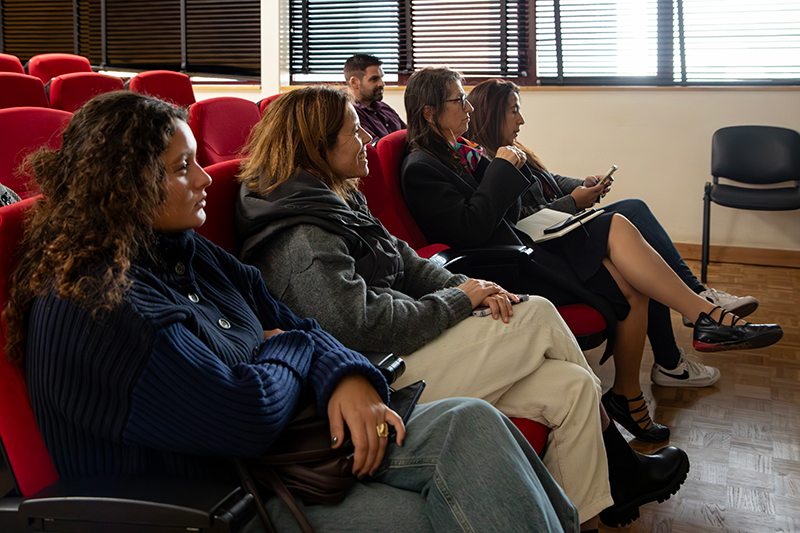
Innovation and community at the heart of ISEL
Representing ISEL’s Board, the session also included professors Alexandra Costa (Vice-President for Infrastructure and Equipment) and Carla Viveiros (Vice-President for Pedagogy and Quality), who congratulated the team for their work and for embodying the institution’s innovative spirit.
Closing the event, Professor Carla Viveiros highlighted the pride in seeing projects like this emerge from the ISEL community: “It’s always rewarding to see our students move from theory to practice. They leave, but their work remains”, she said, expressing satisfaction that students wanted to implement the proof of concept on campus. “It’s good for them and for future professionals still here, who will realize that if they have an idea, they can also make it happen with ISEL’s support. We’re here to help”, she added.
Professor Alexandra Costa emphasized the value of entrepreneurship and continuous improvement: “You now have big responsibilities, with the EDP Foundation and ISEL. When this proof of concept is perfect, you might think ‘we can replicate it ten times,’ but by the 11th, new ideas should emerge. You must always improve”, she said, encouraging the team.

